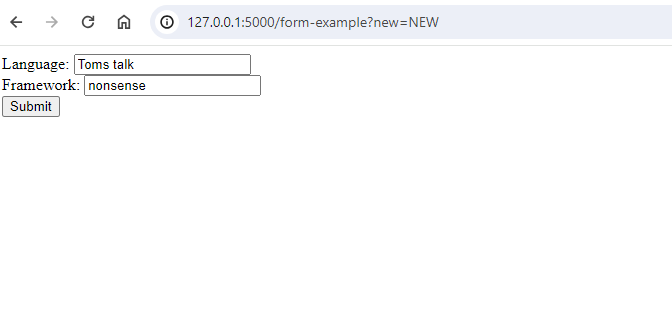Python has a module (Flask) that allows to run a Python module from the commmand line. The code looks like:
# import main Flask class and request object
from flask import Flask, request
# create the Flask app
app = Flask(__name__)
@app.route('/form-example', methods=['GET', 'POST'])
def form_example():
if request.args.get('new') == 'NEW':
return '''
<form method="POST" action ="http://127.0.0.1:5000/form-example">
<div><label>Language: <input type="text" name="language"></label></div>
<div><label>Framework: <input type="text" name="framework"></label></div>
<input type="submit" value="Submit">
</form>'''
language = request.form.get('language')
framework = request.form.get('framework')
return '''
<h1>The language value is: {}</h1>
<h1>The framework value is: {}</h1>'''.format(language, framework)
This can be run from the command line with: python index.py, which leads to a service that is started.

Look at the code. If we provide an URL like “http://127.0.0.1:5000/form-example?new=NEW”, we see that two input fields are provided:

